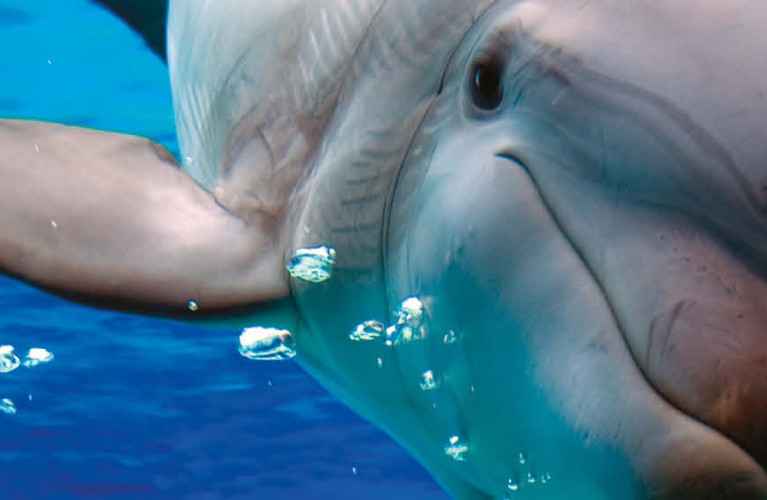
The Dolphins of Dolphins World in Oltremare are the ambassadors of an underwater world , an irresistible call to the wonders of nature.
Common name: BOTTLENOSE DOLPHIN
Scientific name: Tursiops truncatus
Length: 200-400cm
Weight: 200-650 kg
The bottlenose dolphin is a cetacean odontocete belonging to the Delphinidae family. It is one of the most well-known and studied species of dolphins, thanks to its intelligence, adaptability and widespread presence throughout the world. The body is tapered and hydrodynamic, ideal for swimming. The rostrum (snout) is short and stocky, hence the name "bottlenose dolphin" in English. It has a high and triangular dorsal fin, pectoral fins (lateral) and a powerful caudal fin (tail). The color varies from dark gray on the back to light gray or white on the belly. It is a social animal and lives in groups, called schools. To hunt, orient itself and communicate with other similar animals, it uses echolocation. It produces a wide variety of sounds, such as whistles, clicks and trills.
IN ITALY
In Italian waters it is very common: its presence is constantly recorded in the Ligurian Sea, in the Tyrrhenian Sea, in the Strait of Sicily and in the Adriatic. It is one of the cetaceans that best adapts to different habitats. Precisely on the monitoring of dolphins in the Adriatic, since last year the Costa Edutainment Group has developed the Metropolitan Dolphins in the Adriatic project.
It is believed that in Italy there are two distinct ecotypes: a coastal one and a pelagic one . Individuals belonging to the coastal ecotype are generally smaller in size and can migrate, while the pelagic ones are larger and are generally sedentary. In some areas migrations are seasonal and seem to be due to changes in water temperature and the abundance and distribution of prey. It has been observed that coastal waters are sometimes used as a nursery area.
The bottlenose dolphin is predominantly ichthyophagous, that is, it feeds mainly on fish, but when necessary it also feeds on cephalopods, crustaceans and other invertebrates.
Females reach sexual maturity at about 10 years of age, while males at 12. The mating and birth period generally coincides with the warm season. Gestation lasts about 12 months and the cub at birth is about 1 meter long.
It generally lives in packs formed by females and their young, while males can form associations called "alliances". It is an animal that shows a certain curiosity towards humans.